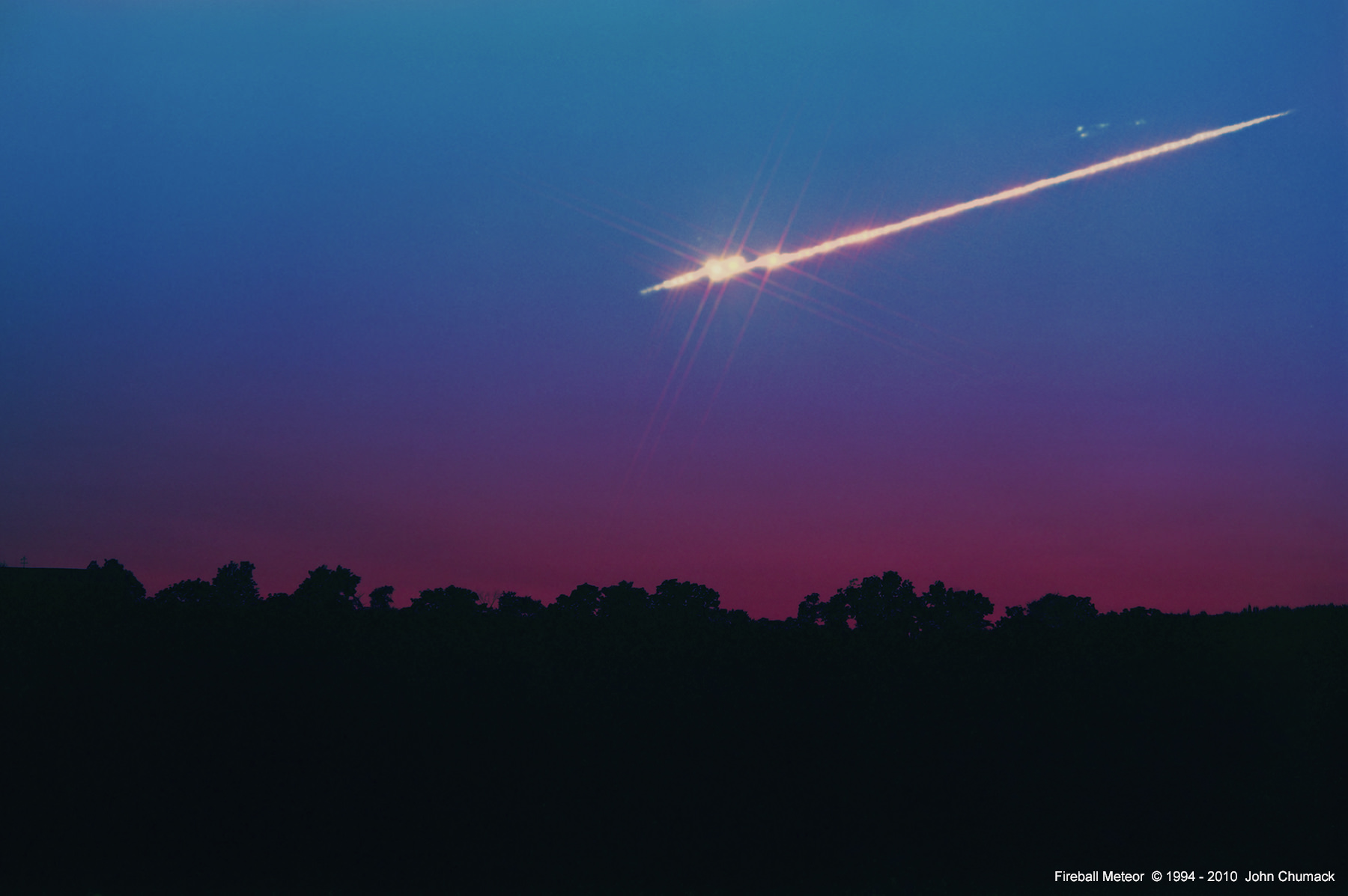[/caption]
Although we couldn’t remind you just before the date of the Lyrid meteor shower peak, there’s no reason to believe the show is over just yet! If you’re an early riser, this just might be your chance to catch a lingering Lyrid…
Every year the Earth encounters the dusty remnants of the tail of Comet Thatcher (C/1861 G1). It doesn’t occur on a very specific date, but we do know it happens in late April. While the peak time is dawn on April 23, it’s not uncommon to see between 5-20 meteors per hour through the 26th.
Why such a widely varied date and diversified fall rate? The answer is… thanks to Jupiter’s massive gravity, we never know exactly when we might encounter a “clump” of comet debris. The majority of the time, the spawn of Comet Thatcher is no bigger than a grain of sand, traveling through our atmosphere at 49 km/s (110,000 mph). Incredibly enough, these fast moving particles can light up as brightly as 2nd magnitude – easily seen from moderately light polluted skies. Some have even been known to appear as fireballs and leave smoke-like trails that linger in the sky for several minutes!
 For the past 2600 years, mankind has been observing the Lyrids – and you can, too. Since their radiant is near the bright star, Vega, your best time to observe is in the hours just before dawn. For many observers, the constellation of Lyra will be high to the east around 4:30 a.m. local time and nearly overhead just before dawn. Even southern hemisphere observers with an unobstructed northern horizon can enjoy the show, too. While there will be some Moon to contend with, placing it behind an obstruction like the corner of a building or a tree will help reduce the glare.
For the past 2600 years, mankind has been observing the Lyrids – and you can, too. Since their radiant is near the bright star, Vega, your best time to observe is in the hours just before dawn. For many observers, the constellation of Lyra will be high to the east around 4:30 a.m. local time and nearly overhead just before dawn. Even southern hemisphere observers with an unobstructed northern horizon can enjoy the show, too. While there will be some Moon to contend with, placing it behind an obstruction like the corner of a building or a tree will help reduce the glare.
 Clouded out or decided to sleep until it was light? Don’t forget your lessons on how to “listen” with your radio! According to NASA, “This year many amateur radio operators tuned into the Lyrids using a technique called radio forward scattering. When fast-moving meteoroids strike Earth’s atmosphere they heat and ionize the air in their path. The luminous ionized trails are not only visually striking — they also reflect radio waves. During a major meteor shower, radio signals from TV stations, RADAR facilities, and AM/FM transmitters are constantly bouncing off short lived meteor trails. For those who know how to listen, it’s easy to hear the echoes.” Don’t remember how to listen? Then take the radio meteor listening tutorial courtesy of the North American Meteor Network.
Clouded out or decided to sleep until it was light? Don’t forget your lessons on how to “listen” with your radio! According to NASA, “This year many amateur radio operators tuned into the Lyrids using a technique called radio forward scattering. When fast-moving meteoroids strike Earth’s atmosphere they heat and ionize the air in their path. The luminous ionized trails are not only visually striking — they also reflect radio waves. During a major meteor shower, radio signals from TV stations, RADAR facilities, and AM/FM transmitters are constantly bouncing off short lived meteor trails. For those who know how to listen, it’s easy to hear the echoes.” Don’t remember how to listen? Then take the radio meteor listening tutorial courtesy of the North American Meteor Network.
Will you catch a lingering Lyrid? You never know until you try…
Many thanks to John Chumack of Galactic Images and to NASA for the illustrations.


We’ve been clouded out here on the Left Coast above S.F. for this event… dzzzz. BUT maybe tonight we’ll get a hole in the WX? Hope so… I’d like to see a Lyrid and start off the summer meteor viewing with a BANG!